Disclaimer
- This guide is for advanced users only.
- In this guide, we will apply performance tweaks inspired by CachyOS to Fedora Linux. Some steps may require advanced knowledge of Linux system administration.
Introduction
- CachyOS is a powerful and easy-to-use Linux distribution based on Arch Linux. It offers an easy installation process and customization options, providing an optimized experience for both novice and experienced users.
- Fedora Linux is a powerful and innovative distribution that delivers the latest software in a stable environment. However, in order to achieve the best experience, certain performance enhancements may be required. These enhancements can reduce system response times, shorten application launch times, and improve the overall user experience.
- In this article, we will explore how the performance-oriented tweaks offered by CachyOS can be applied to Fedora Linux to improve system performance.
Step 1: Enable CachyOS COPR Repositories
-
The CachyOS developers provide a set of COPR repositories that contain performance-oriented tweaks and enhancements for Fedora Linux. To enable these repositories, run the following commands:
sudo dnf copr enable bieszczaders/kernel-cachyos sudo dnf copr enable bieszczaders/kernel-cachyos-addons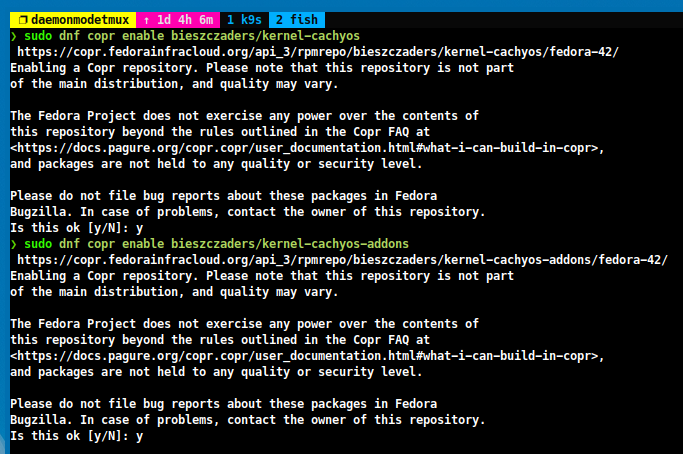
Step 2: Install CachyOS Kernel and Addons
-
First, install the CachyOS kernel by running the following command:
sudo dnf install kernel-cachyos{,-core,-devel{,-matched},-modules}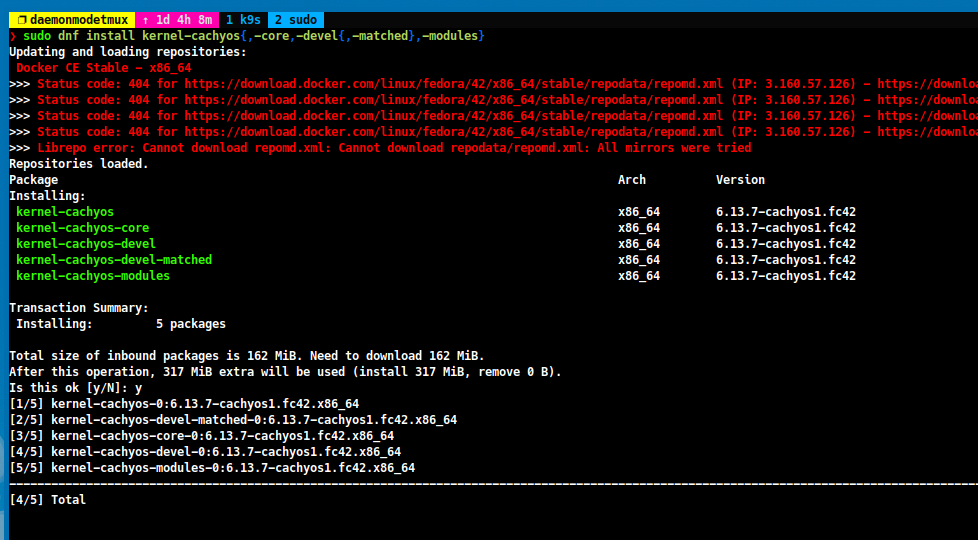
-
After installing the CachyOS kernel, install the CachyOS addons by running the following command:
sudo dnf install cachyos-settings cachyos-ksm-settings scx-scheds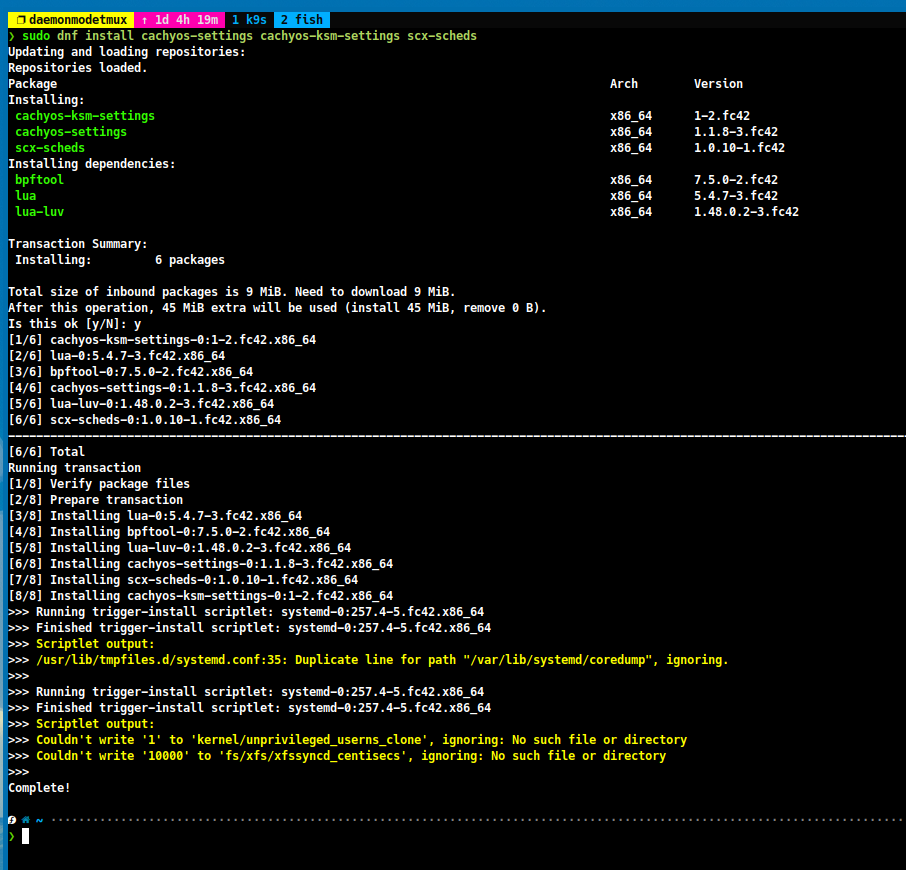
CachyOS Addons
Step 3: Configure System Tweaks
-
First, edit the
/etc/kernel/cmdlinefile and add the following parameter to the kernel command line:skew_tick=1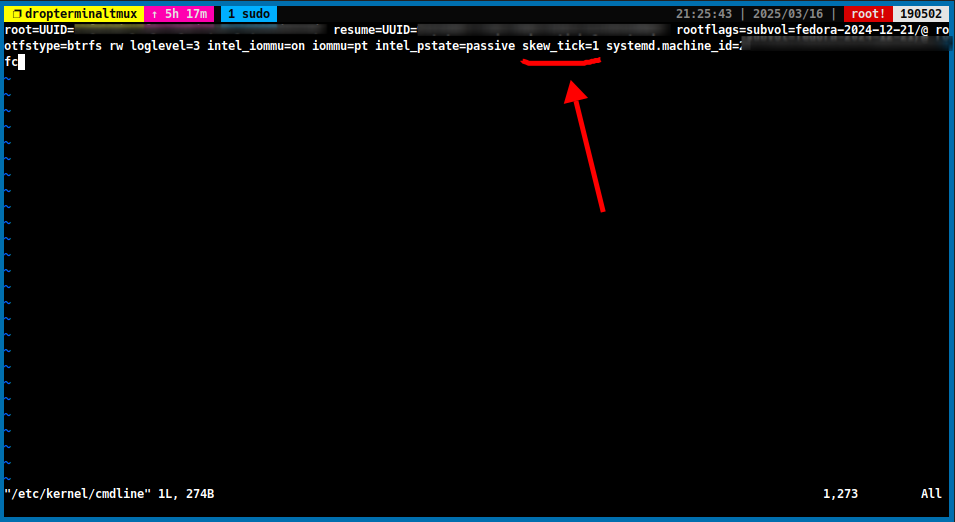
Tip
The
skew_tickparameter reduces the system’s response time by skewing the timer tick towards the end of the tick period. This can improve the responsiveness of the system.
-
Next, configure memory-related tweaks by running the following command:
cat <<EOF | sudo tee /etc/tmpfiles.d/system_config.conf w! /sys/kernel/mm/transparent_hugepage/shmem_enabled - - - - advise w! /sys/kernel/mm/ksm/sleep_millisecs - - - - 500 EOF
Memory Management Optimization
transparent_hugepageis a feature that allows the kernel to use large memory pages to reduce the overhead of managing memory. By settingshmem_enabledtoadvise, we instruct the kernel to use transparent hugepages for shared memory segments.ksm(Kernel Samepage Merging) is a feature that allows the kernel to merge identical memory pages to reduce memory usage. By settingsleep_millisecsto500, we configure the delay between scans for identical memory pages to 500 milliseconds (0.5 seconds).
-
Create a new file
/etc/sysctl.d/99-sysctl-custom.conffor system-wide performance tweaks:cat <<EOF | sudo tee /etc/sysctl.d/99-sysctl-custom.conf ### Memory tweaks vm.swappiness = 10 vm.vfs_cache_pressure = 100 vm.page-cluster = 1 vm.dirty_ratio = 40 vm.dirty_background_ratio = 10 vm.compaction_proactiveness = 0 ### Network net.core.default_qdisc = cake net.ipv4.tcp_congestion_control = bbr net.ipv4.tcp_fastopen = 3 net.ipv4.tcp_tw_reuse = 1 net.ipv4.tcp_adv_win_scale = -2 net.ipv4.tcp_mtu_probing = 1 net.core.busy_read=50 net.core.busy_poll=50 net.ipv4.tcp_ecn=1 net.ipv4.tcp_slow_start_after_idle = 0 net.ipv4.tcp_low_latency=1 ### MISC kernel.nmi_watchdog = 0 kernel.perf_event_paranoid=1 EOF
Configuration Breakdown
Memory Settings
vm.swappinesscontrols the tendency of the kernel to swap memory pages to disk. A lower value reduces the likelihood of swapping.vm.vfs_cache_pressurecontrols the tendency of the kernel to reclaim memory from the page cache. A lower value reduces the likelihood of reclaiming memory.vm.page-clustersets the number of pages to read ahead when reading from the page cache. A value of0disables read-ahead.vm.dirty_ratioandvm.dirty_background_ratiocontrol the percentage of memory that can be used for dirty pages before the kernel starts writing them to disk.vm.compaction_proactivenesscontrols the aggressiveness of memory compaction. A higher value increases the frequency of memory compaction.Network Settings
net.ipv4.tcp_congestion_controlsets the TCP congestion control algorithm tobbr, which is optimized for high-speed networks.net.ipv4.tcp_fastopenenables TCP Fast Open, which allows data to be sent in the initial SYN packet.net.ipv4.tcp_tw_reuseenables the reuse of TIME_WAIT sockets.net.ipv4.tcp_adv_win_scalesets the window scaling factor for TCP connections.net.ipv4.tcp_mtu_probingenables Path MTU Discovery for TCP connections.net.core.busy_readandnet.core.busy_pollcontrol the busy polling behavior of network interfaces.net.ipv4.tcp_ecnenables Explicit Congestion Notification for TCP connections.net.ipv4.tcp_slow_start_after_idledisables slow start after a period of inactivity.net.ipv4.tcp_low_latencyenables low-latency mode for TCP connections.System Settings
kernel.nmi_watchdogdisables the NMI watchdog timer.kernel.perf_event_paranoidsets the paranoia level for performance monitoring events.
-
Enable the PCI latency optimization service:
sudo systemctl enable --now pci-latency.service
PCI Latency
This service optimizes PCI device response times by minimizing latency timers.
-
Regenerate the initramfs to apply kernel changes:
sudo dracut -fv --kver $(ls /lib/modules | grep -i cachyos | head -n 1) -
Then reboot to apply all changes:
sudo reboot
Step 4: Change CPU Scheduler
-
The kernel scheduler is crucial for managing how processes are executed on the CPU. By changing the scheduler, you can optimize the system for different workloads such as gaming, low latency, or power-saving.
-
First, list the available schedulers by running the following command:
dbus-send --system --print-reply --dest=org.scx.Loader /org/scx/Loader org.freedesktop.DBus.Properties.Get string:org.scx.Loader string:SupportedSchedulers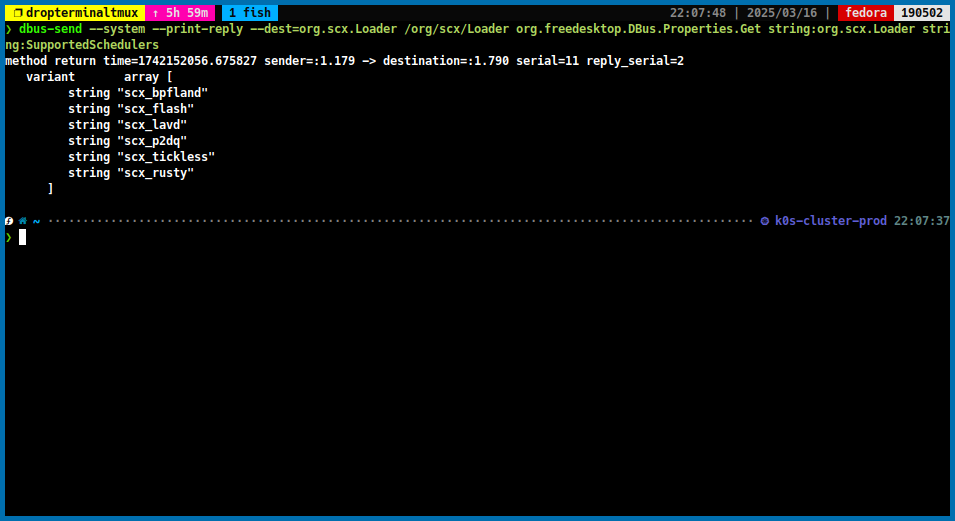
-
In this section, we will use the
bpflandscheduler. To test thebpflandscheduler, run the following command:sudo scx_bpfland
Scheduler Info
The bpfland scheduler provides excellent performance for both desktop and gaming workloads. For more details, visit the official page.
-
If the bpfland scheduler performs well, set it as the default by editing
/etc/scx_loader/config.toml:sudo vim /etc/scx_loader/config.toml -
Configure the scheduler settings:
default_sched = "scx_bpfland" default_mode = "Gaming" [scheds.scx_bpfland] auto_mode = [] gaming_mode = ["-m", "performance"] lowlatency_mode = ["-s", "5000", "-S", "500", "-l", "5000", "-m", "performance"] powersave_mode = ["-m", "powersave"] [scheds.scx_rusty] auto_mode = [] gaming_mode = [] lowlatency_mode = [] powersave_mode = [] [scheds.scx_lavd] auto_mode = [] gaming_mode = ["--performance"] lowlatency_mode = ["--performance"] powersave_mode = ["--powersave"]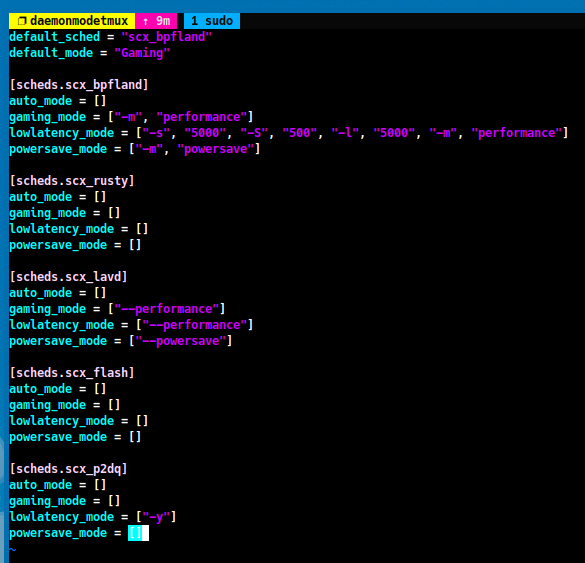
-
Then, restart the
scx_loaderservice to apply the changes:sudo systemctl restart scx_loader -
To verify the scheduler settings, run the following command:
dbus-send --system --print-reply --dest=org.scx.Loader /org/scx/Loader org.freedesktop.DBus.Properties.Get string:org.scx.Loader string:CurrentScheduler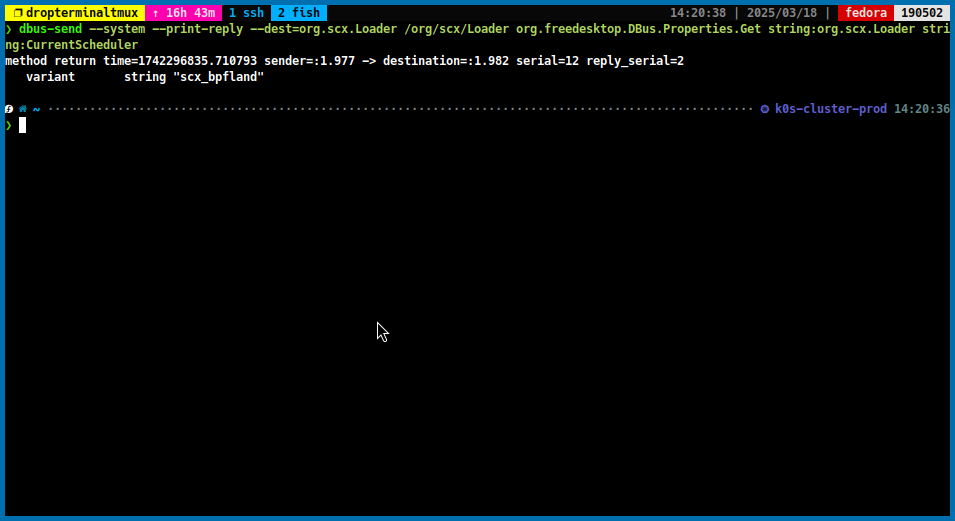
Conclusion
-
By implementing these CachyOS-inspired optimizations, you’ve significantly improved the performance of your Fedora system. The combination of
- High performance custom kernel
- Optimized memory management
- Improved network stack
- Efficient CPU scheduler
- Fine-tuned system parameters
-
These enhancements work together to provide
- Faster system response times
- Better resource utilization
- Improved gaming performance
- Improved multitasking capability
- Reduced latency for real-time applications
Remember that system performance is a journey, rather than a destination. Monitor your system’s behavior after applying these changes and adjust the parameters as needed to match your specific use case and hardware configuration.
References
- https://wiki.cachyos.org/configuration/general_system_tweaks/
- https://wiki.cachyos.org/configuration/sched-ext/
- https://copr.fedorainfracloud.org/coprs/bieszczaders/kernel-cachyos/
- https://copr.fedorainfracloud.org/coprs/bieszczaders/kernel-cachyos-addons/
- https://docs.redhat.com/en/documentation/red_hat_enterprise_linux_for_real_time/7/html/tuning_guide/reduce_cpu_performance_spikes